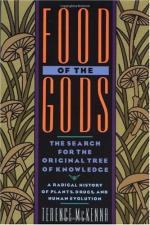|
This section contains 388 words (approx. 1 page at 400 words per page) |

|
Twilight in Eden: Minoan Crete and the Eleusinian Mystery Summary and Analysis
McKenna theorizes that there might be several reasons for the growing distance between the human-fungal partnership; the introduction of other psychoactive plant substitutes, such as ephedra and fermented honey may be one of those. The changes in climates would have affected mushroom growth, rendering it from regular to seasonal. Mushrooms could be preserved through drying or preserving them in honey, an easily fermentable substance that could have led to the gradual replacement of mushrooms. Psychoactive plants might have also become symbols, replaced by plants with inactive properties, and then not replaced at all, but merely abandoned.
Minoan society inherited many values and cultures from far-off times. It maintained the partnership ideal for three millennia after the rest of the world had fallen into the dominator...
(read more from the Twilight in Eden: Minoan Crete and the Eleusinian Mystery Summary)
|
This section contains 388 words (approx. 1 page at 400 words per page) |

|




